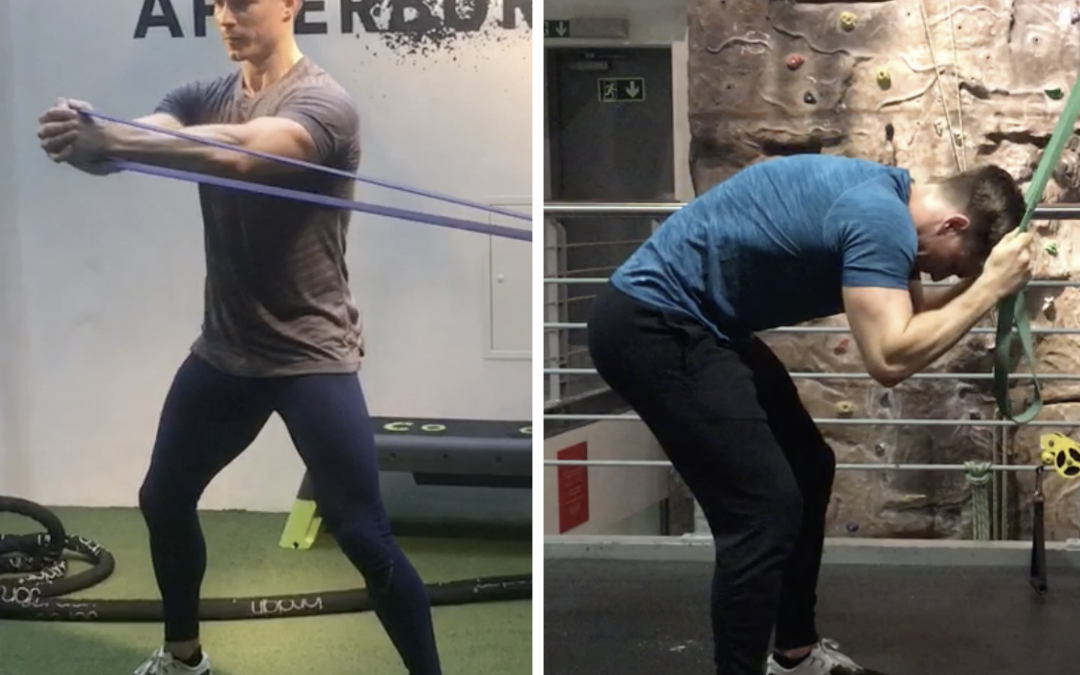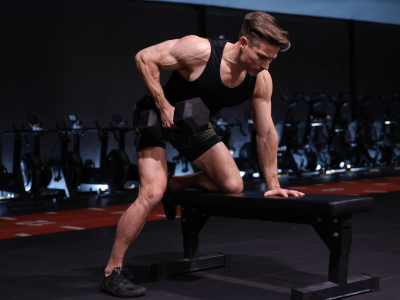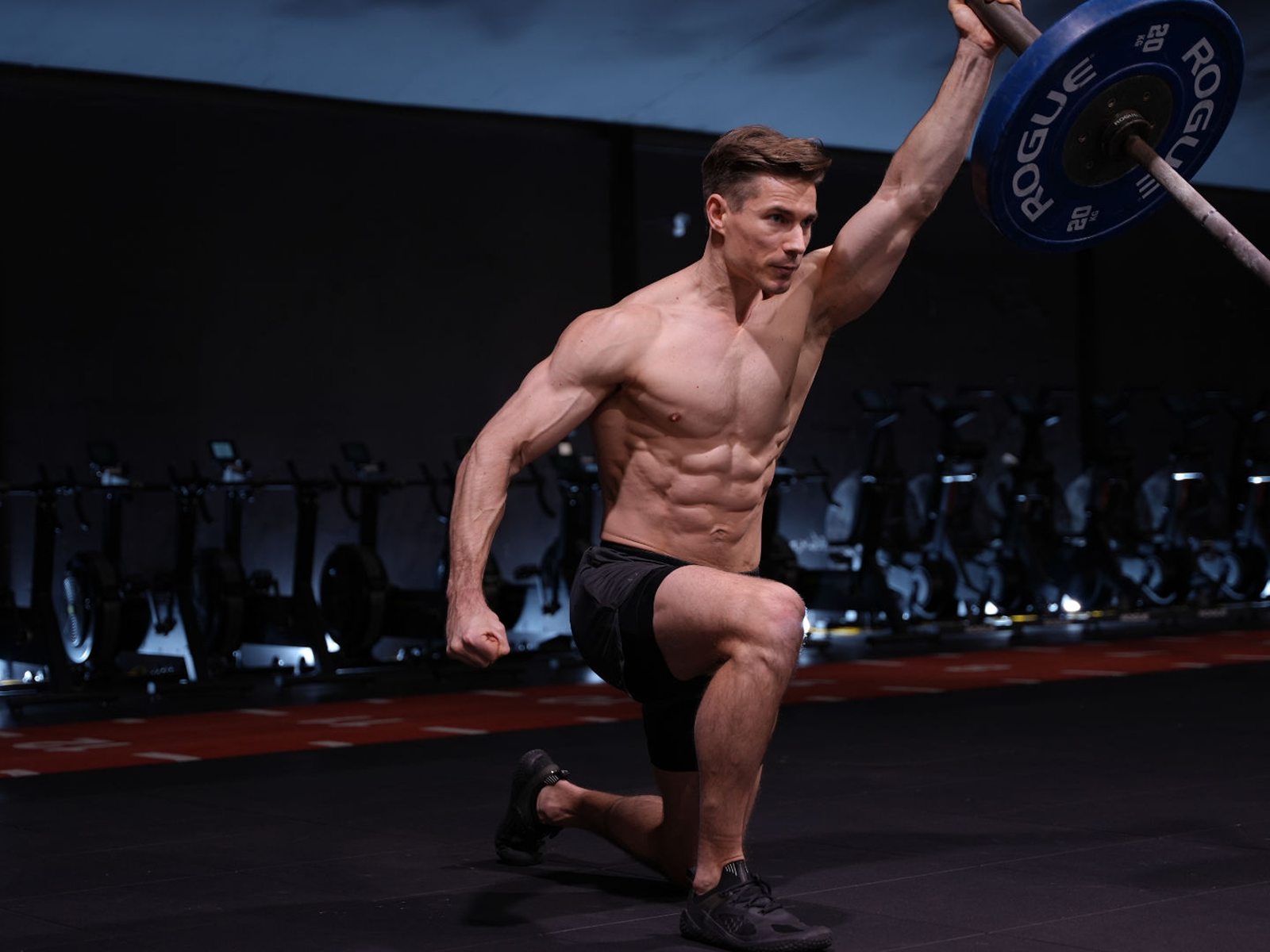There is one fitness goal that dominates all others – shredded abs.
Its no surprise really, a lean and defined mid section is widely considered the hallmark of a great physique. Which might explain why notable bodies like Brad Pitt in Fight Club are still talked about today (He’s got nothing on Wolverine tho).
But despite the obvious visual appeal, muscles of the core have very important functions too. As the link between the upper and lower body, the core must be damn good at stabilising the hips and spine. Both from the standpoint of performance and injury prevention.
With that being said, aesthetics and function DO NOT necessarily go hand in hand.
You can have abs that look like they were carved from stone, yet possess about as much stability as a slinky. Conversely, you can have a strong and stable core, hidden beneath a squidgy and undefined midsection.
Now of course body composition will ultimately determine ab definition. But taking that variable out of the equation, this mismatch is also in part a product of the training method adopted.
I call this the Abs vs Core approach.
I don’t know about you, but I would rather have it all – abs that function as good as they look. And the good news is, you can! There is a sweet spot.
But before I present the solution, lets take a look at the two ends of the ‘ab/core/whatever you wanna call it’ training spectrum.
‘Ab’ Training
Most people that train solely to look better fall into this category.
Characteristics
- A heavy focus on training the rectus abdominis (the 6 pack muscle) which is the main muscle involved with spinal flexion.
- A lot of flexing, bending and twisting motions of the spine.
- Popular exercises include variations of sit-ups, crunches and side bends/twists.
- Training volumes are often high – Lots of reps and sets.
Pro’s / Con’s
From an aesthetic standpoint, this approach is great at inducing ab hypertrophy (making them thicker) so they stand out more. However, this goes completely against core function – training the abs as movers, not stabilizers. This can lead to increased injury risk, low back pain and postural dysfunctions.
‘Core’ Training
This is the go-to approach for people that train for health and performance reasons.
Characteristics
- A focus on training the spine to resist motions such as anti-extension, anti-flexion and anti-rotation.
- Popular exercises include planks, roll-outs, palloff presses, cable chops, loaded carries and so fourth.
- Rep range varies but there is a greater emphasis on ‘quality’ than quantity.
Pro’s / Con’s
Improving core stability will mitigate injury risk and safeguard the low back. It will also result in a better foundation for force production in the upper and lower extremities – thereby leading to better performance in the big lifts and all athletic activities. The only downside comes from an aesthetic standpoint. More often than not, muscular tension and metabolic stress in core specific exercises is too low to ‘hypertrophy’ the abs.
The Best of Both
Can a happy medium exist between two seemingly opposing strategies?…Abofuckinglutely. However, I’m not dividing the shares equally.
Core training MUST take precedence – The benefits of which far outweigh the ‘oldschool’ approach to direct ab work.
What I propose is to use a 2:1 ratio of core:abs.
This will provide you with the necessary workload to develop all-round core stability and enough isolated work to make those muscles ‘pop’.
SIDE NOTE: This does not have to be an exact science.
For the sake of simplicity – let’s breakdown ‘core’ and ‘ab’ training into their constituent parts.
With regards to core training, there are 3 distinct categories that should be covered:
- Anti-Extension
- Anti-Lateral flexion
- Anti-Rotation.
And for the less aesthetic movements, we have:
- Upper abs – rib-cage flexes toward the hip.
- Lower Abs – hip flexes toward the rib-cage.
Programming Strategies
With the above information, you can be pretty creative. And ill say it again, this does not need to be an exact science.
But to give you some ideas and get you going, I’ll walk you through an example plan for someone who trains 3 days / week.
This work is to be tacked on to the end of your training sessions:
Day 1
Core Super-Set
A1 TRX Fall-outs (Anti Extension) 3×10 No rest.
A2 Band Palloff Presses (Anti rotation) 3×10 Each way. 1min rest.
Day 2
Core Super-Set
A1 TRX Body Saw (Anti Extension) 3×10-15 No rest.
A2 Suitcase Carries (Anti Lateral flexion) 3×30 seconds / each way 1min rest.
Day 3
Ab Super-Set
A1 Reverse Crunch (Lower abs) 3×15 No rest.
A2 Standing Band Crunch (Upper abs) 3×15 1 min rest.
Wrapping Up
Im always going to favour training methods that carry over to improved function and performance – and you should too. The health, performance and longevity of your body depends on it.
That said, a sprinkling of isolated ab exercises will do no harm, instead rewarding you with thicker, more impressive looking abs.
I have had great success with this strategy and it will work for you too!




Great post. I’ll be adopting this from tomorrow 👌
Having done Crossfit for that last year, I cannot stress how much I rely on my core for all the movements. Having a good looking six-pack is great but I’d rather fewer injuries and complaints than something I can wash my clothes on. This post is great as you can train for having both!
Love this blog!
Thanks so much for the positive feedback!
Great article and good advice! I need to implement this.
Recently discovered your content and I’ve been adopting a ton of your tips and exercises. Like most there I have neglected mobility so I’ve added that 10-15 min mobility circuit for joint health to my morning routine. Is been 3 days and I’m already noticing a difference, so thanks for that.
Anyway, I’m wondering if you meant to say “more” aesthetic exercises instead “less” when introducing upper and lower ab work. Through my first read of the article I was wondering when the aesthetic exercises you advocate would be mentioned but they just never came. This would make sense as a typo since the core exercises were all functional and less aesthetic than the upper/lower exercises you introduce inday 3.
Thanks again for the great content
Hi Sean. Thank you for noticing, yes that was a typo. I’m very glad to hear that you’re already noticing a difference. Keep it up!! 🙂
Thank you so much for this and all the endless content that helped me a lot in knowing better from your IG posts, to YouTube than all your blogs. So happy and glad to have discovered you, hoping I did wayyyy earlier. You literally are a miracle, life saver, changer and a greatest fitness role model (and etc 😁) for me 🙂 Other people would discourage aiming for abs saying a strong core is more important. Others would just wants the “abs” to show but struggle to actually maintain the “pop” for good and just do not have/ attain the lifestyle in them. Thanks for teaching us the smarter way of training and for ideas way outside the box. 🙂
my pleasure! thanks for taking the time to give feedback